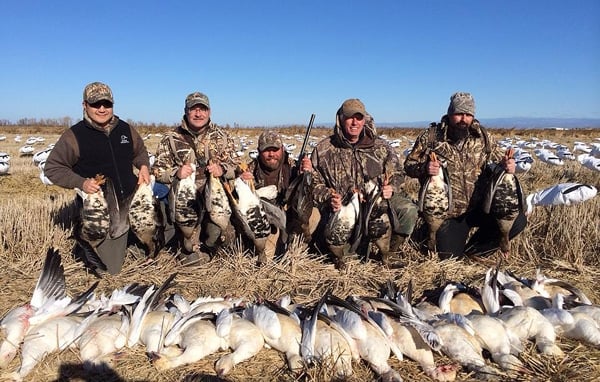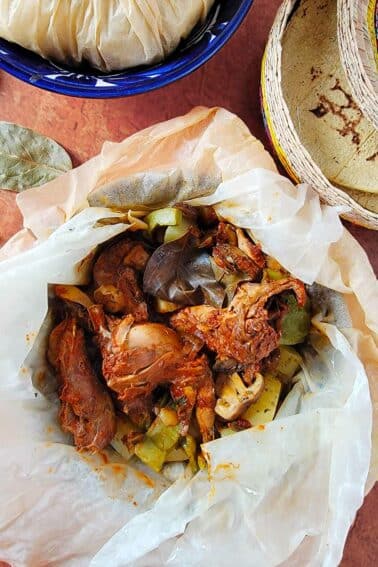As an Amazon Associate I earn from qualifying purchases.
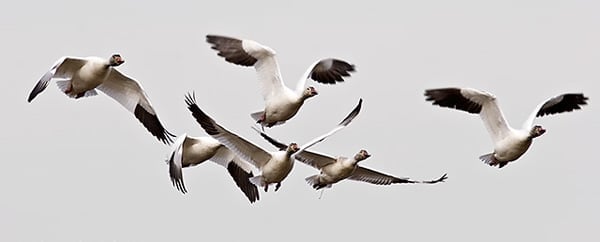
Geese are not ducks, and goose hunting is not duck hunting.
There’s a certain light-heartedness about duck hunting that reflects the whimsical, unpredictable — slightly comic — nature of the ducks themselves. As any duck hunter knows, ducks can fool you in some pretty hilarious ways. And you can spend a morning hunting ducks on a lark, very little prep required. If you get some, great, If not, there’s always manana.
Goose hunting is not like this. Geese are serious animals, stately, dignified — almost regal. And they are far more predictable than ducks. Geese have a routine, and while it does vary, we humans are better able to guess where the geese might be on any given morning. But guessing where the geese will fly (and getting access to that land) is just the first hurdle. Now you must convince them to come close enough to you for a shot.
This is harder even than it sounds. Geese are not stupid, and they travel in tight family groups. The elders, some of whom are pushing voting age (the oldest ever recorded was 30 years old!), have seen many winters and many hunters. An old goose is just about as wary an animal as exists on this earth. Most of the geese we hunters do manage to bring down are young and foolish. This is how I can kill a few of my favorite geese, the specklebelly, every year.
Specks and their white friends the snow geese — they often flock together — will sometimes peel off the great “V’s” flying high and circle downward toward your duck decoys, especially if you have a few goose decoys in the spread for good measure. When you hunt ducks, geese are a target of opportunity.
Goose hunting, proper goose hunting, is very different.
A true goose hunt is a serious affair, almost military. I recently teamed up with my friends RJ Waldron of Northwind Outfitters and Jason Adversalo of Fowl Pursuer Adventures, who were hunting on a piece of ground my friend Joe Navari has access to, for one such hunt. Waking at 3 a.m., I poured myself some black coffee and piled into my pickup to head north to Biggs, a small town in Northern California.
I was told to park next to a levee near a canal. When I got there I met my hunting buddy Frankie, who’d driven three hours from the Bay Area to get there. I’d barely turned off the ignition when RJ rolled up in a quad and whisked us to the field. “Put out these decoys in that direction,” he said, pointing to a sea of white, bobbing snow goose decoys.
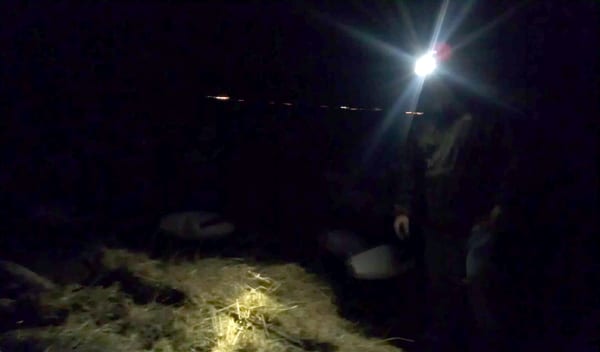
We were using what are called windsocks: white snow goose-like decoys that bob in the wind. Lethal and very lifelike if the wind happens to be blowing. And it was: It was 5 a.m. and a north wind was already blowing close to 25 knots. Perfect goose weather. All of us worked on the decoy spread for more than an hour. All told we had put out more than 1,500 decoys, everything from the socks to elaborate, felted full-body decoys that cost hundreds of dollars for a mere half-dozen. Goose hunting is not something to take lightly.
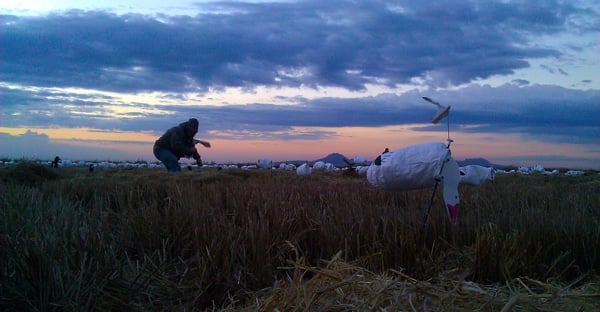
We were all sweating, and it was close to shooting time. All told there were 10 of us, lined up in layout blinds like shotgun-toting, camouflage jacks-in-boxes. In we went… and I suddenly started to shiver. It wasn’t very cold — well above freezing — but with a howling wind, being sweaty and laying on the ground, which can suck the heat right out of you, I was shaking. But then again it could have been in anticipation.
Here’s the thing: I love goose hunting. Love it far more than duck hunting. Holly thinks I’m crazy, but it’s true. Geese are so tough — tough to pattern, tough to fool, tough to kill — that it jut thrills me in a way ducks do not. I also happen to think that Anser albifrons, the greater white-fronted goose, a/k/a whitefront, specklebelly, tar-belly, speck, or my favorite, “ribeye in the sky,” is the best-eating waterfowl on the planet. Only a fat pintail or canvasback come close, and no other goose can even approach a speck in flavor or fat.
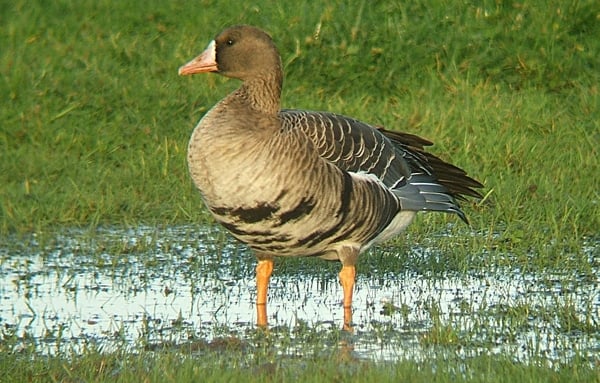
It did not take long for the first geese to arrive. I had forgotten my speck call (I’m no good at calling snows, yet… ) but Joe, RJ, and Jason were in full gear, barking, yodeling and squawking. “From the left!” RJ hissed. “Coming!”
And I saw them. A horizontal line of specklebelly geese sailing in from low in front of us, wings locked and yodeling all the way. I’d be lying if I told you I did not feel a rush of adrenaline. In a heartbeat they were right over us. “Kill ’em!” RJ shouted and we all popped open the doors of our blinds, rose up and blasted away at the geese, now just 20 yards high.
When I goose hunt like this I do several things: First I look at my side of the line, so I don’t shoot at geese my partners should be shooting at. Next I watch for clumps of birds. Maybe they are crossing or even running into each other in their rush to get away. I pick one of the birds in that clump and shoot it. Many times more than one will fall from the sky, in which case I follow them all the way down with my shotgun until I am convinced they will hit the ground — I’ve seen too many geese seemingly die, then collect themselves and fly off to do otherwise. If they don’t fall, I shoot again at the bird I’d aimed at, and watch. Sometimes geese, being extraordinarily tough animals, will take several pellets to the body and not fall. But if one shot was mortal, they will fall from the sky and die, sometimes a full quarter mile away. It’s my job as a hunter to mark that goose and chase it down.
We dropped four geese out of that bunch, including one I’d shot. Soon another group came, and several dropped out of that group, too. Then a few snow geese came in. Snows can be brutally hard to decoy: Not only do they have elders among them, but they also tend to flock up in vast numbers — thus our 1,500 decoys. Having that many dekes out is the only way to bring those flocks in.
“Here they come!” I could feel RJ vibrating he was so excited. I peeked over my toes to see what he meant. Holy shit. A flock of 300-plus snow geese was coming right at us, barking and howling so loud we could barely hear ourselves. Wings locked. The rising sun shone behind them, and the backlighting made the geese look eerily supernatural: The Lords of the Air descending to earth. I was transfixed, in a trance watching them come closer. What broke it was one goose, flying lower than the rest. It turned its head as it was descending to look right at me. That’s when I heard RJ call the shot.
A fusillade of shotgun fire went up, and nine snow geese fell from the air. I found two crossing geese right over me, fired twice and watched them fly away, only to fall dead a few seconds later.
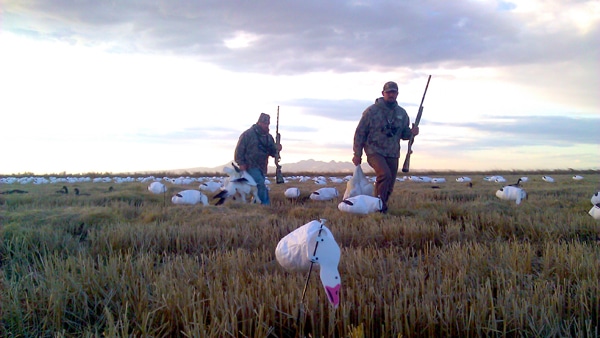
In the end, we’d shot 40 geese by 9 a.m. The morning flight had ended. Geese, being predictable, were all wherever they would be for the better part of the day. But for once, we had fooled them. And for the first time ever, I’d shot a full 10-goose limit: Three specks and seven snow geese.
I will savor those specks in confit, roasted breasts, corned gizzards, and pastry made from their excess fat; I rendered a full 1 1/2 cups of clean, sweet fat from just those three birds. The snows, which I skinned, will become kabanosy to take to the duck blind, barbacoa for cold nights, giblet sausages and many other things. This is not a hunt I will soon forget.
